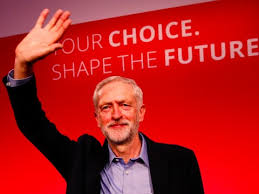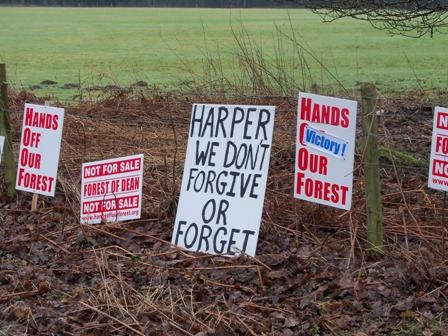“What would Keir Hardie say?” Edited by Pauline Bryan and published by Luath Press Ltd, Edinburgh. ISBN 978-1-910745-15-1
Clarion Review by Alistair Graham
 Keir Hardie can justifiably be seen as Labour’s first leader. He was one of those who helped to found the Independent Labour Party (ILP), in I893 – called “Independent” to distinguish itself from those who’d been elected to Parliament as “Lib-Lab” members – in other words who relied on Liberal support for their seats.
Keir Hardie can justifiably be seen as Labour’s first leader. He was one of those who helped to found the Independent Labour Party (ILP), in I893 – called “Independent” to distinguish itself from those who’d been elected to Parliament as “Lib-Lab” members – in other words who relied on Liberal support for their seats.
Hardie, who grew up in the Scots town of Cumnock, went on to be the first truly Labour MP in the Commons. He opposed the looming clouds of conflict in the years leading up to 1914 and spoke eloquently from anti-war platforms. But worn out with his efforts he died prematurely in 1915.
This book is a collection from contributors assessing Hardie’s record and his relevance to the politics of today – though as there’s been a over a century of change since his day I found it difficult in places to trace the connections. But there are, of course, common themes that run through the decades.
One of the contributors to the book is Jeremy Corbyn, today’s leader of the Labour Party. Others include fellow political activists and academics.
“A LEGACY FOR THE PEACE MOVEMENT”:
Corbyn sees Hardie’s work as a “legacy for the Peace movement”, and introduces his contribution with an account of the mass peace march in London, in February 2003 in which well over a million took part., to voice opposition to the invasion of Iraq. “It was the biggest ever demonstration in British history.” He goes on to look at the carnage of the First World War, and how it is remembered in his own constituency of Islington.
Another contributor is Melissa Benn – writing in the footsetps of her mother, Caroline Benn who produced a definitive “warts and all” biography of Hardie back in 1997. Melissa makes the point that Hardie had no love for Parliament. (And it’s worth adding, Parliament had no love for him). He saw his role more as an agitator. “Agitation was at the heart of three of the most significant movements of his lifetime – the representation of labour, the struggle for women’s suffrage and pacifism”.
Barry Winter, who has had a long connection with the ILP, remembers two old party members (no longer with us) who had memories of Hardie when he was alive. Bert Lea remembered Keir Hardie asking him to sell copies of the ILP paper, the Labour Leader, which he continued to do for the rest of his long life. And in Bradford. May Allinson was one of the children who performed for Hardie at an ILP concert in 1914. She gave a lifetime commitment to both the ILP and the Socialist Sunday School.
Barry’s contribution is in the main a historical account of the foundation of the ILP (at a special conference in Bradford) through the early years of its growth. Hardie saw the need to forge an alliance with the trade union movement which was then finding its feet. In 1899, the TUC voted to form “a Labour Representation Committee” (though not all unions backed it). Then, in 1906 this Committee transformed itself into the Labour Party, though it made slow progress in its early years.
“MORE THAN A CREED”:
A contribution by Richard Leonard describes Hardie as a “visionary” dedicated to the creation of a Socialist society.” He sees Hardie as a man guided by moral principles rather than by philosophical theorising.” He believed that the truths about Socialism were self-evident, rooted in ethical values and moral courage.
“Yet Hardie clearly understood the class-based nature of capitalist society and the need to appeal to workers as a class. He saw the value of the work of Marx and Engels, but he did not believe in following it rigidly. And Richard Leonard quotes from Hardie’s from Serfdom to Socialism “The economic object of Socialism is therefore to make land and industrial capital common property, and to cease to produce for the profit of the landlord and the capitalist and to begin to produce for the use of the community.”
Many I would hope, would see this as a good summary of their own beliefs when it comes to the transformation of society under Socialism.
HARDIE’S “WELSH ODYSSEY”:
During his Parliamentary career, Hardie represented two constituencies – first was West Ham, and then came Merthyr Tydfil. The account of his “Welsh Odyssey” is written by Owen Smith (MP for the neighbouring constituency of Pontypridd).
Smith starts his contribution with reminiscences of growing up amidst the slag heaps of South Wales, with his grandfather telling him of Keir Hardie campaigning from slag heaps when he gained the seat of Merthyr Boroughs in 1900. He “gave a hundred or more such ‘Cinder Hall’ sermons” before his election.
Hardie had lost his seat in West Ham five years earlier, which gave him some time to visit South Wales, and to build up a following for the ILP as well as for himself as a potential candidate. “This period cemented Hardie’s reputation as a standard bearer for the working class,” writes Owen Smith.
Despite Merthyr’s radical traditions, stretching back to the days of the Chartists, Hardie had his opponents. There was a strong Liberal tradition in the area, but there was also a strong conservative element amongst chapel goers. But Hardie was able to capitalise on the anti-war -feelings, stirred up by the Boer war, as well as his support for the miners in the struggle. He won, and was to represent Merthyr until his early death in 1915.
RELEVANCE TO TODAY:
Owen Smith then turns to the relevance of Hardie’s work to today. “How can a Queen’s Speech in 2015 call up the spectre of Taff Vale with its promise to curb the right to strike and break the democratic power of the trade unions?” He asks. “Perhaps Hardie would have been surprised that we still have so far to travel, and that such hard won progress can be halted with such ease.”
In such a rich collection of fact and comment in this book it’s only really possible to skim the surface in a review such as this. But I will finish with one more contribution – on Hardie’s roots in Cumnock, in Scotland.
HARDIE’S HOME TERRITORY:
Kier Hardie was an internationalist, but according to Cathie Jamieson, the Scots community of Cumnock in Ayrshire was always his home. It was where his family was raised, and where he always returned. And even today the town still remembers him in so many different ways
He and his wife Lillie arrived in Cumnock in 1979. He was then involved with the miners’ union in Lanarkshire.
It was in Cumnock that Hardie developed the political ideas that would shape the rest of his life. “The struggle of the miners he represented was fundamental to his work and his emerging political beliefs,” writes Kathie Jamieson. It was here that he realised that the Liberals would not deliver the kind of changes that the working class needed. He was soon backing a resolution put forward by the Ayrshire miners that “the time has come for the formation of a Labour Party in the House of Commons…”
Later he was to declare: “I am a Socialist, and until industry is organised on a co-operative basis, wherein men shall work, not to make profit, but to produce the necessaries of life for the community, the evils complained of will never be eradicated.”
OTHER BOOKS ON HARDIE:
There have, of course, been quite a few books written and published on the life and times of Kier Hardie. That’s only natural. But this volume is different. It sees his life from so many different angles, and though it contains numerous viewpoints, all are sympathetic to a man who, more than most, helped to create a movement that over the decades has helped to shape our society – and hopefully will continue to do so in years to come. If, of course, we remember the ideals that Hardie worked so hard for.
And it’s a compendium to be read from cover to cover – or just dipped into over a period of time.



 POINT TAKEN:
POINT TAKEN: